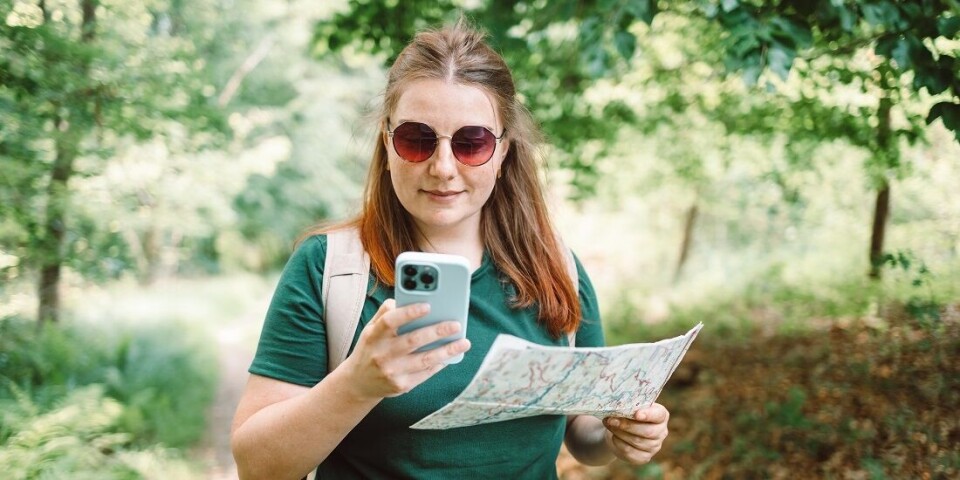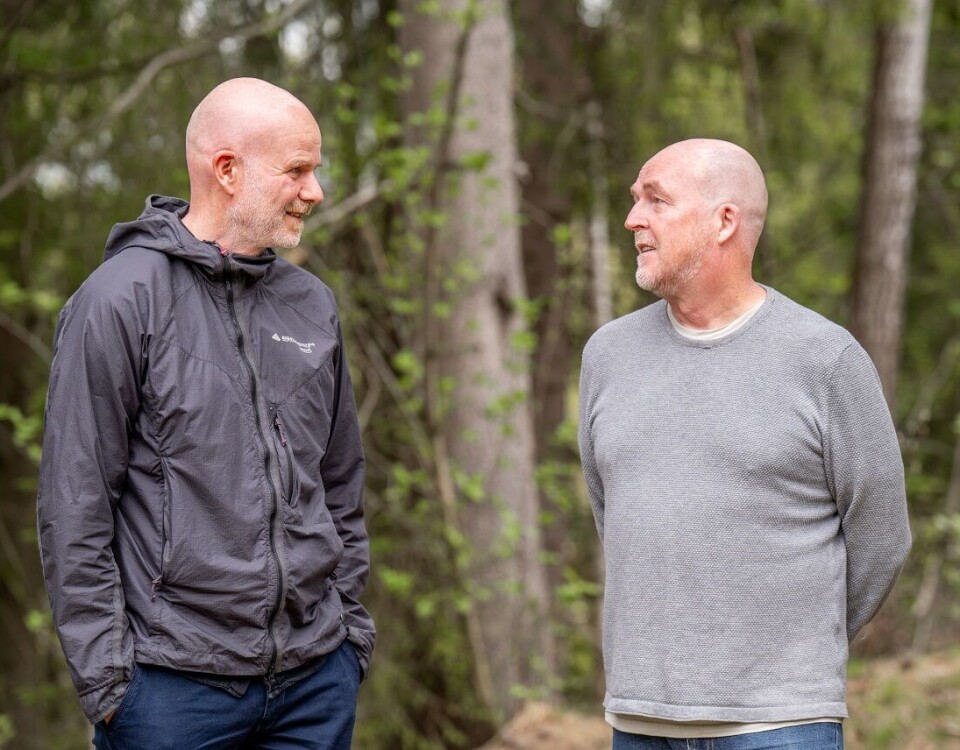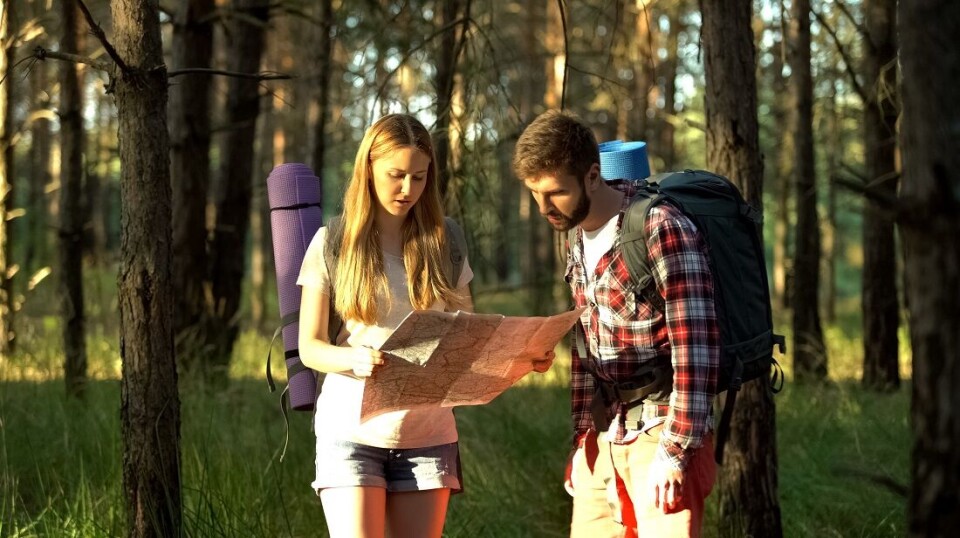THIS CONTENT IS BROUGHT TO YOU BY NTNU Norwegian University of Science and Technology - read more

5 tips for if you get lost
Researchers have investigated what happens when people get lost. They have some good advice that can get you home safely.
It’s summer and peak season for getting lost in the great outdoors. These are busy times for the Norwegian rescue services, as for many other rescue services across the Northern Hemisphere.
The summer holidays can often involve up to dozens of calls each day from members of the public who have lost their way or need help in the Norwegian outdoors – and many end in rescue missions.
For each of these cases, there is an unknown number of hikers who get lost but manage to find their way back long before it becomes necessary to involve the rescue services.
These individuals are an untapped potential mine of useful information, Ole Edward Wattne believes. He is an assistant professor and PhD candidate at NTNU’s Department of Design.
“We don’t know enough about what happens from the time someone feels disoriented to when they find their way back again. If we did, we could probably avoid a significant number of rescue operations,” he says.
Now, together with colleague Frode Strand Volden, he has begun to fill this knowledge gap.

Surprisingly complex
By asking over 400 people who have lost their way in the wild how they found their way back, the two researchers have developed an overview of the strategies and aids people resort to in these kinds of situations.
Their findings paint a surprisingly complex picture.
“One assumption often seen in the literature is that people resort to so-called random searching when they get lost. In other words, they wander around aimlessly trying to find a way back. Our research confirms that this is exactly what some people do, but generally, what happens is much more nuanced than that,” says Wattne.
Letting the dog find the way
Wattne and Volden have divided the strategies used by lost individuals to reorient themselves into four main categories and about twenty subcategories. Most of the survey participants describe having used a combination of these to find their way back.
“Most people describe using deliberate strategies, often as part of a multi-step process. For example, the first thing many people do when they are lost is use digital maps, like Google Maps or even maps in mobile phone apps like SnapChat. Some people report walking towards high ground to gain an overview or to find landmarks in the surroundings,” says Wattne.
Several participants also found more unorthodox ways out of the situation, the researchers report.
“Three people simply let their dog find the way. Some individuals oriented themselves using sounds, such as from traffic or waterfalls. Others used the way the terrain sloped to orient themselves in a fog-covered landscape,” he says.

People don’t follow common advice
However, the fact that almost no one followed one of the most common pieces of textbook advice surprised the researchers.
“The first thing many textbooks advise you to do if you get lost is to stay put. Surprisingly, many of our respondents did the exact opposite – they started walking,” says Wattne.
This could be because they did not feel truly lost and managed to find their way out of the situation on their own, he suggests.
Despite the fact that many people ignore this key piece of advice, previous studies suggest that Scandinavians are generally quite good at navigating. Wattne believes there may be several explanations for this:
“Norwegians generally love being outdoors. The Norwegian Trekking Association (DNT) is virtually a cornerstone of the Norwegian self-image. Many people have also learned to use maps and compasses at a young age, and orienteering is a compulsory part of PE lessons in Norwegian lower and upper secondary school,” says the researcher.
Death by GPS
Frode Volden is uncertain, however, about how this will hold up in the future. Their data reveal that a change may be underway.
“We have an incoming generation of young people who like being outdoors and have a completely different perspective on what aids are available,” he explains.
This became very apparent when the researchers looked at who uses physical aids when they get lost.
“Everyone we asked used digital maps, but not everyone used a traditional map and compass. It was primarily older people who had maps,” says Volden.
The researchers believe this requires adaptations in how we teach people to navigate in natural surroundings.
“Digital mapping services are important tools, but they must be used correctly. An extreme is so-called ‘death by GPS.’ There have been several cases where people have followed their GPS so blindly that they have ended up in the middle of a desert or driven off the edge of a quayside,” says Wattne.

Improving outdoor safety
There is also a risk of people not noticing crucial reference points in their surroundings if they rely too heavily on digital tools, warns Volden.
“The more aware you are of things like cardinal directions, landmarks, and other elements in the surroundings, the greater the chances of you finding your way back if you get lost,” he explains.
In the worst case, digital mapping services can become a crutch you are completely helpless without.
“There is also a correlation between how many strategies you have in your repertoire and how confident you feel being in the great outdoors. In addition, your level of confidence affects the likelihood of whether you even venture out into the wild,” he says.
Making sure people are as safe as possible in the great outdoors is not just about preventing hikers from getting lost. There are also cultural, environmental, and public health reasons for wanting people to feel safe outdoors, the researchers explain.
They hope their research will contribute to this.
The best trip advice for your trip
Here the researchers have gathered their best advice for people planning a trip into the wild this summer:
- Download a proper hiking map app. Google Maps does not provide detailed enough information about the terrain. The Norwegian Mapping Authority’s ‘Hvor?’ app is a better alternative.
- Always have analogue backup solutions on long trips like a map and compass – and learn how to use them!
- Pay attention to landmarks and be aware of your surroundings as you move through the landscape. This will make finding your way back much easier.
- Try not to become too dependent on digital mapping services or other single strategies when navigating outdoors. Having more than one strategy provides much better safety.
- Don’t be afraid to venture out into the mountains and forests. As long as you follow the Norwegian Mountain Code and the above advice, you should be all set for a safe and enjoyable outdoor experience.
Reference:
Wattne, O.E. & Volden, F. Waylosing and wayfinding in the outdoors: a typology of wayfinding approaches to problem-solving when temporarily lost, Journal of Navigation, 2024. DOI: 10.1017/S0373463324000067
———
Read the Norwegian version of this article on forskning.no
More content from NTNU:
-
Social media is connected to cyberbullying – but not how we thought
-
Forskere ved NTNU får nesten 24 millioner av EU for å lage nye strømomformere
-
This helps the youngest children enjoy school more
-
Can we tap the ocean’s power to capture carbon?
-
Researchers have uncovered major problems in Norway's salmon industry
-
Why ChatGPT is bad at imitating people





































